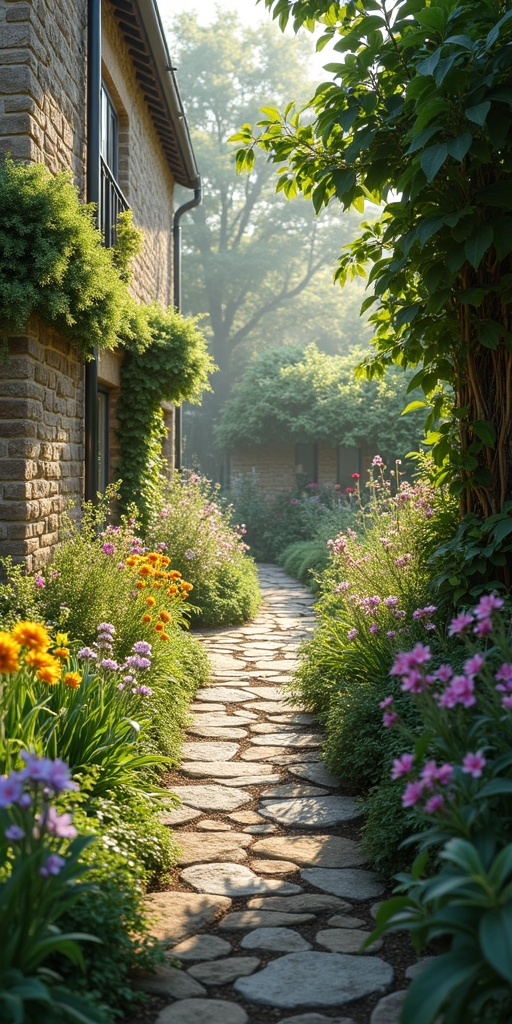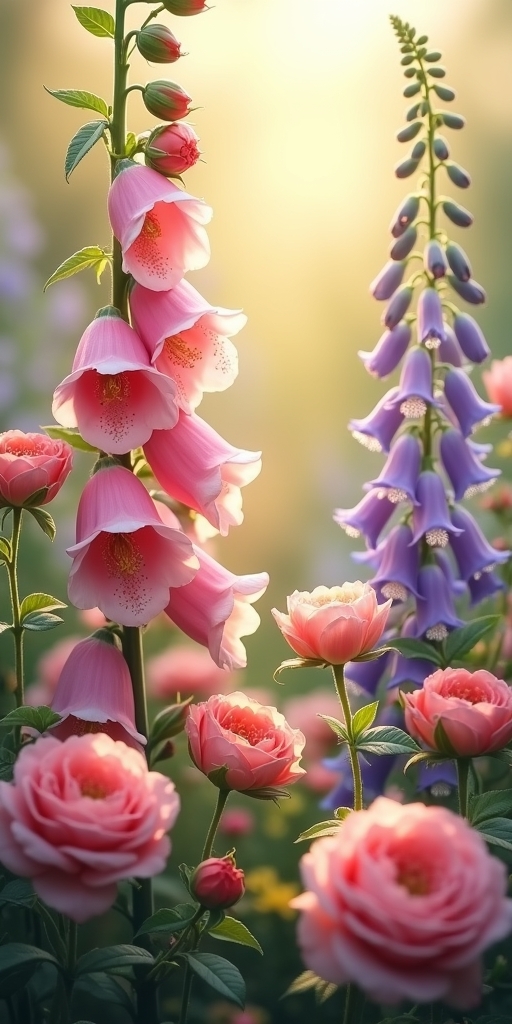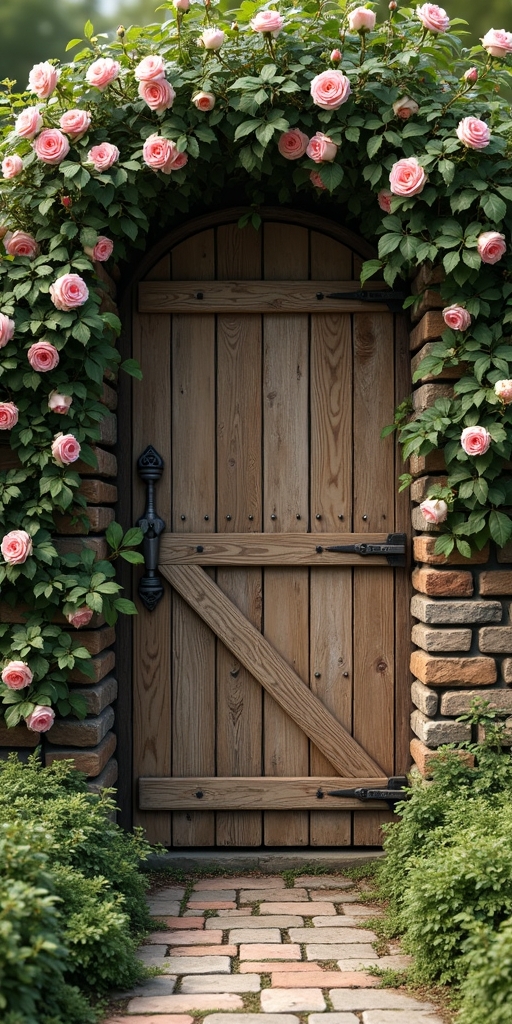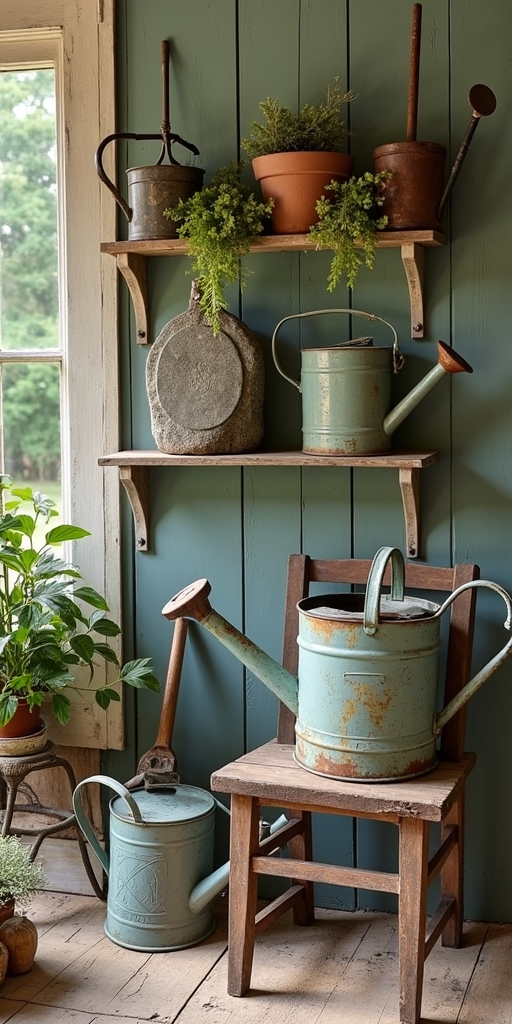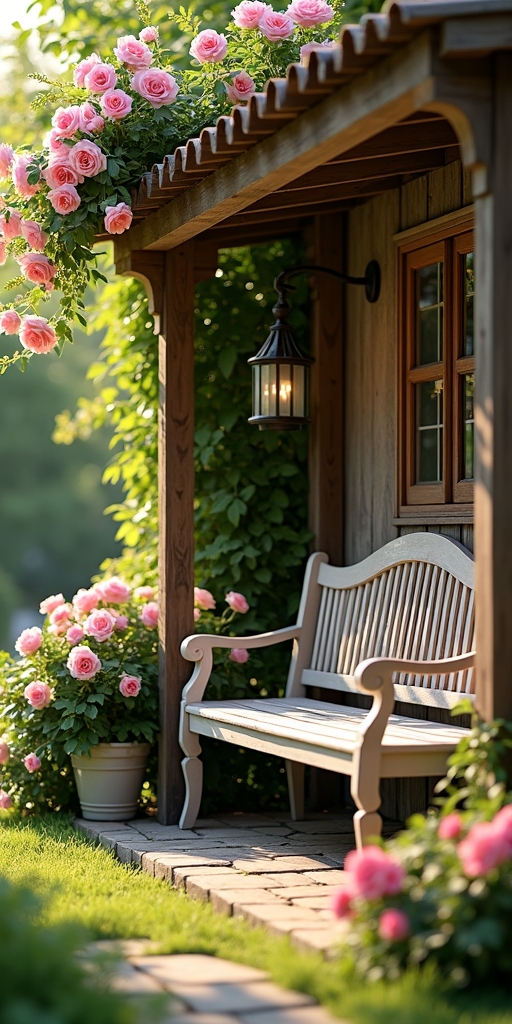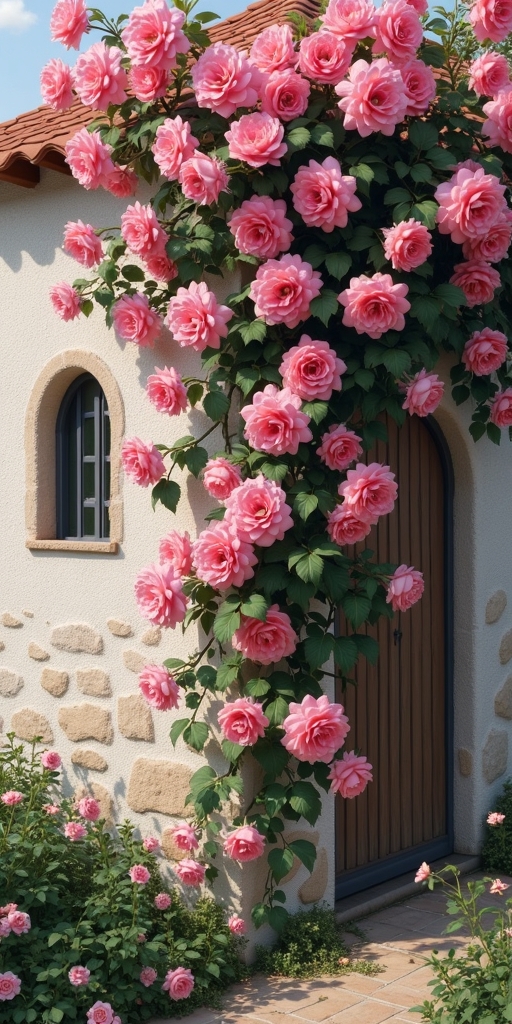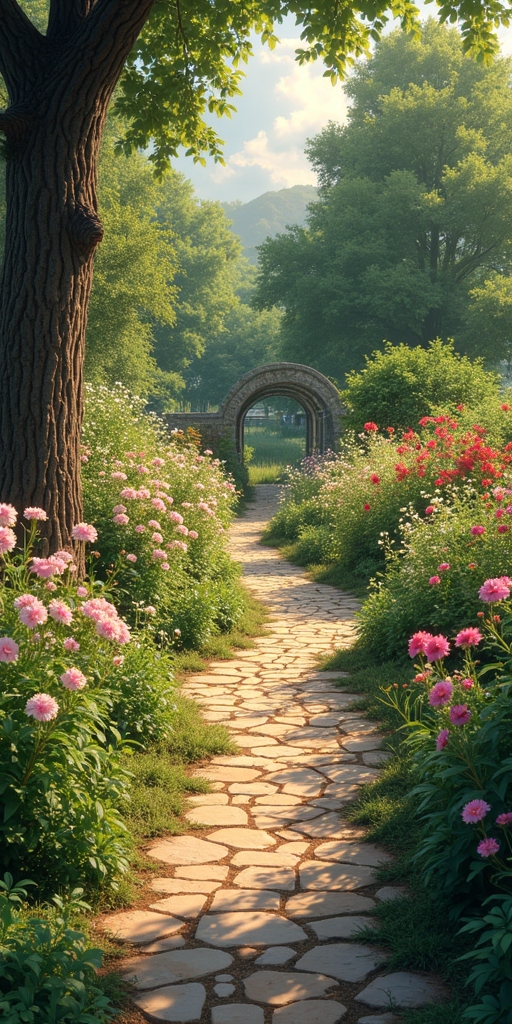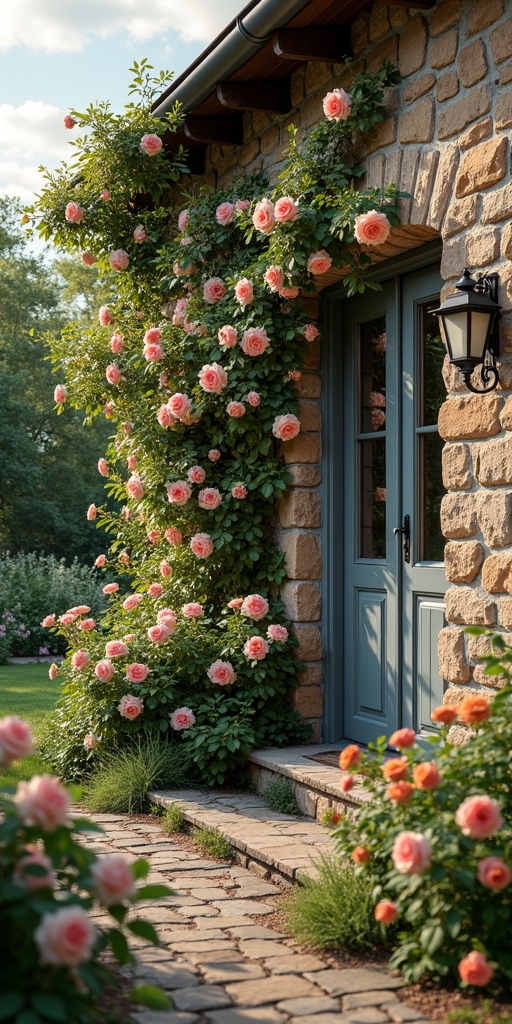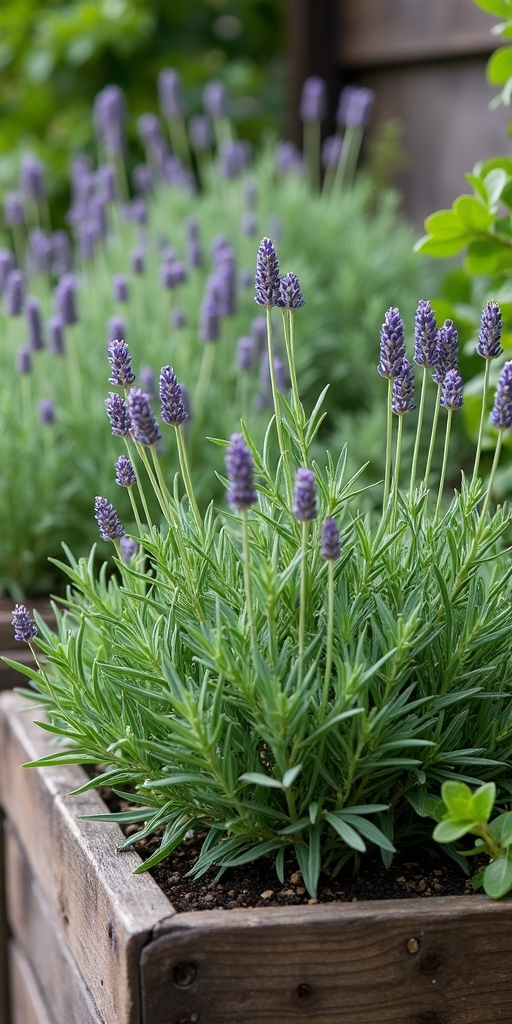A cottage garden enchants with its informal naturalness and playful romance. Lush flowering shrubs, fragrant roses and picturesque climbing plants transform any garden into a little paradise reminiscent of the idyllic country house gardens of England. The charming mix of formal and wild elements invites you to linger and dream.
If you want to design your garden in the popular cottage style, you can draw on a variety of enchanting design options. From winding gravel paths and romantic seating areas to the right choice of plants – with a few simple tricks, you can create the relaxed atmosphere of a traditional cottage garden in your own home. The following 12 ideas will show you how to give your garden that unmistakable cottage charm.
Cottage garden design for beginners
For beginners, it is advisable to start with robust, low-maintenance plants such as delphiniums, hollyhocks, coneflowers and fragrant herbs. The beds are planted densely so that weeds have little chance. A winding path made of natural stone or gravel, lined with low perennials such as lavender or catmint, leads through the garden. It is also important to integrate practical elements such as a small vegetable garden or fruit trees that reflect the original character of a cottage garden.
Romantic cottage garden plants
Delicate forget-me-nots and primroses adorn the front garden in spring, followed by summery daisies, coneflowers and cranesbill. Fragrant herbs such as sage, thyme and lemon balm complete the romantic cottage ambience and attract butterflies and bees, while hydrangeas and monkshood enliven shady corners of the garden.
Cottage garden fences and gates
Cottage-style garden gates are usually made from the same material as the fence and blend harmoniously into the overall look. They are often fitted with decorative elements such as forged fittings, curved top sections or integrated pergolas, which serve as a climbing aid for flowering climbing plants and create a romantic entrance to the garden.
Vintage decoration in the cottage garden
Vintage decorative elements also create charming accents in the entrance area and on the house façade. An old wooden shutter serves as a climbing aid for clematis, while an antique zinc bathtub acts as a lush planter. Weathered wooden crates are converted into rustic flower boxes and, together with nostalgic enamel signs, create an inviting atmosphere that underlines the special charm of the cottage garden.
Cottage garden seating design
The design of the seating areas follows the typical English country house style – informal, romantic and natural. Vintage garden furniture made of wrought iron, soft cushions in pastel shades, decorative lanterns and storm lanterns as well as planters with fragrant herbs create a relaxed atmosphere. Small teahouses or roofed arbors are also particularly attractive, allowing you to stay sheltered in the garden even in light rain.
Roses in bloom in the cottage garden
The roses are perfectly complemented by classic cottage garden perennials such as delphiniums, foxgloves and hollyhocks. Together, they form a picturesque backdrop reminiscent of English cottage gardens of yesteryear. The natural, informal design makes the garden look like an enchanted paradise where time seems to stand still.
Create cottage garden paths
Practical aspects such as water drainage and sure-footedness are taken into account with a slight gradient and non-slip surfaces. The path layout is based on the natural paths in the garden and connects important areas such as the patio, compost and vegetable patch. Wide main paths allow two people to walk comfortably, while narrow side paths lead through dense plantings.
Natural stone walls in cottage style
The craftsmanship of dry stone walling is particularly evident in the cottage style. The stones are carefully stacked without mortar, creating a stable structure that defies wind and weather. The walls can serve as property boundaries, raised beds or slope protection and develop a natural patina over the years. Climbing roses, wild vines or clematis use the rough surface as a climbing aid and transform the stone wall into a living garden element.
Cottage garden herb corner
On warm summer days, bees and butterflies buzz around the flowering herbs, while the wind gently moves the leaves of the mint and lemon balm. The herbs not only serve as decorative elements, but also provide fresh ingredients for the kitchen and remedies for home use. Small seating areas invite you to linger and enjoy the calming atmosphere of this natural garden area.


